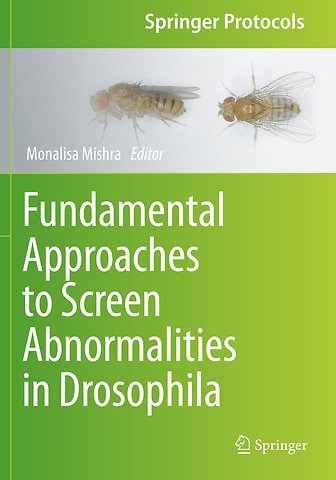Fundamental Approaches to Screen Abnormalities in Drosophila
Samenvatting
This volume includes in-depth, hands-on protocols for detecting various developmental defects in Drosophila. It provides cutting-edge methods for maintaining Drosophila under laboratory conditions to perform various experiments, and for dissecting various imaginal discs of the larvae. Further, biochemical protocols for estimating the levels of different metabolites, reactive oxygen species, and fat-sensitive pathways are discussed, and various staining and behavior techniques for fat detection are provided.
The book explains how various fluorescent dyes and the comet assay can be used to identify DNA damage, and elaborates on the analysis of the eye, antennae, imaginal disc, gut and muscle damage under bright field and fluorescent microscopes. It covers the analysis of hemolymph using Giemsa staining; determining the functionality of channel proteins, eye and mechanosensory organs in adults and larvae using various behavioral assays; and metal detection and structural analysis for various tissues using SEM. In closing, it addresses the analysis of Drosophila’s eye and head via paraffin section; measurement of reactive oxygen species from various tissues via FACS; and the CRISPER technique for gene editing and analysis of micro RNA mutations.

